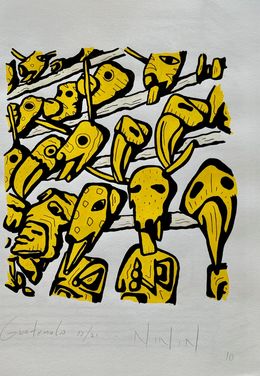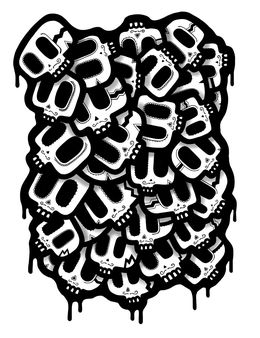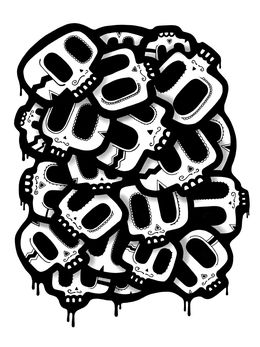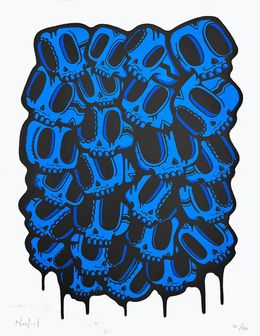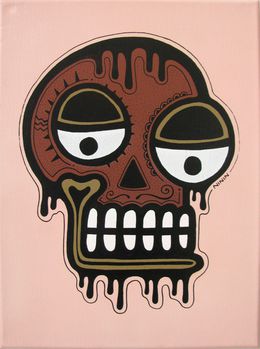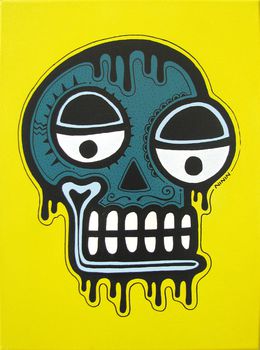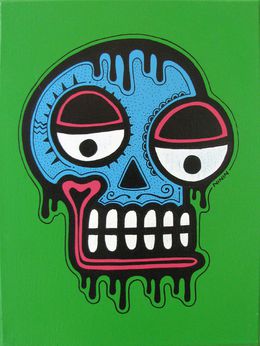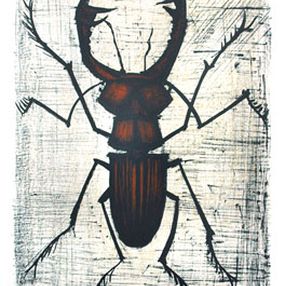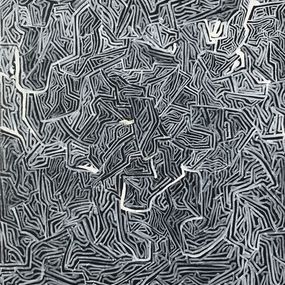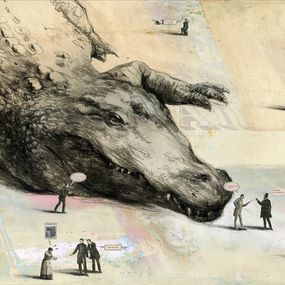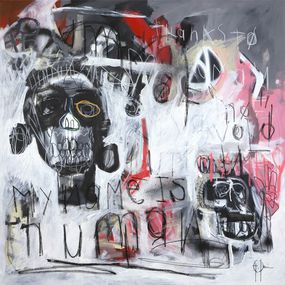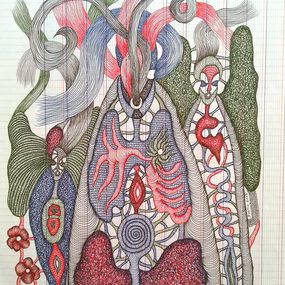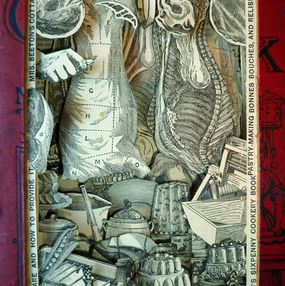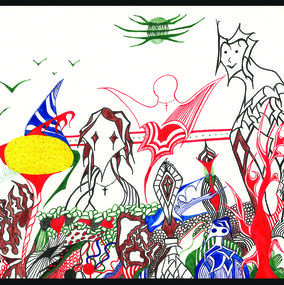
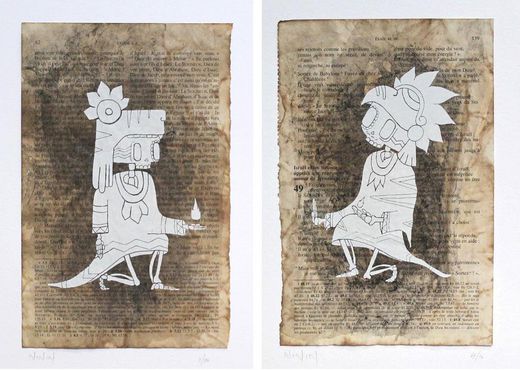
Biography
Ninin was born in Cordoba, Argentina in 1990.
His initiation began at the age of 12 with the artist Marta Miliani. The year 2012 marks his professional entry into the art world with his permanent exhibition at the "Monaco Art Gallery".
A year later, Ninin began a journey which led him to participate in various exhibitions and collective projects in Brazil, Uruguay and France.
In 2014 Ninin moved to Paris and began to take an interest in street art. In his Parisian workshop, he meets several street-artists with whom he learns new techniques such as stenciling and wood sculpture, disciplines that will serve him to bring his creations into the city walls.
In May 2021, his first solo exhibition at Galerie Wawi (Paris) was a great success.
In Ninin's graphic universe we find strong references to pre-Hispanic art from South America, mixed with contemporary artistic trends such as art brut and pop art.
In this way, Ninin mainly uses the walls of European capitals to carry out a critique of colonization in America and to revive symbols, images, legends and myths from Latin roots. What he calls cultural counter-colonization, or contracolonia.
Nationality
Categories
Artistic movements
Themes






